What is Vedic Ghee?
Ghee also known as clarified butter can be made from the milk of many animals like Buffalo, Cow etc. But the Vedic Ghee can be made from desi cow milk from the indigenous breed.
However, to make pure cow ghee with the Vedic process we need to follow the traditional method of making Ghee, where we do not use any artificial equipment or supplement in the cow diet. We make Vedic Ghee (Pure Cow Ghee) from milk collected from grass-fed desi cows.
Read More : How to use ghee for weight gain
- Maintain the quality of milk: They offer green-leafed food in which they do offer soya and other content so that cows could have a healthy diet. Also, while making ghee they boil the milk till its thickness goes over the normal cream. They do not use the cream for making ghee, instead, they use curd root to obtain Desi Cow Milk Ghee.
- Feed the Calf too: Only 70% of milk is obtained and 30% left for the calf.
- Use earthen pots and wooden churners: Traditionally people of India, use earthen pots to boil the milk, make the curd and use wooden churners to obtain unsalted cultured butter from the curd. They ensure the purity of the butter. No chemical is used in this process.
- Say no to Chemicals or Injections: Real ghee can be obtained from organic grass-fed cow’s milk only. They don’t require any chemical or injection to produce extra milk. People collect only what a cow can easily give and save a satisfying amount for her calf.
- Ethics of worship Gau Mata: Do not treat her as a milk machine. Only take excess milk once calves are satiated. Do not force artificial pregnancies. Do not force hormones to increase milk yield. Do not keep them in prison. They must graze daily in the open green paddy field.
Read More : Traditional bilona churned Ghee Bilona ghee properties
A full spectrum of short (SCFA), medium (MCFA) and long-chain fatty acids (LCFA), both unsaturated and saturated Omega 3 and Omega 9 essential fatty acids Vitamins A, D, E and K2 Ghee made from organic butter.
How to make Vedic Ghee?
Vedic Ghee is prepared by churning the curd of milk, the whole curd is churned with a wooden churner in the traditional method and then heating the cream obtained from it.
The process of creating traditionally clarified butter is complete once the water is evaporated and the fat (clarified butter) is separated from the milk solids.
In this process, around 27-28 Kg of milk is used to make just 1 Kg of a2 ghee! It has all the properties described in Vedas and Ayurvedic Shahtras. It is the essence of milk, rather than heating the cream obtained directly from milk.
In another method (butter/cream oil) Ghee is prepared by simmering butter, which is churned from cream, skimming any impurities from the surface, and then pouring and retaining the clear, still liquid fat, while discarding the solid residue that settles on the bottom.
Spices can be added for flavour. The texture, colour, and taste of ghee depend on the quality of the butter, the source of the milk used in the process and the duration of the boiling.
Properties of Vedic Ghee :
Desi ghee is typically prepared by simmering butter, which is churned from cream (traditionally made by churning Dahi), skimming any impurities from the surface, and then pouring and retaining the clear liquid fat while discarding the solid residue that has settled to the bottom.
The texture, colour, and taste of desi ghee depend on the quality of the butter, the milk source used in the procedure and the duration of time spent boiling. Who says tasty can’t be healthy?
Rediscover the many health benefits for which pure cow ghee has been implemented since ancient India. From its dietary uses to its lifestyle applications, discover how pure cow ghee is a must-have addition to your staples, being more beneficial than regular commercial ghee. This ghee boosts metabolism. Lowers bad cholesterol. Good for pregnant ladies. Slows down the ageing process. Good for body massage of newborns.
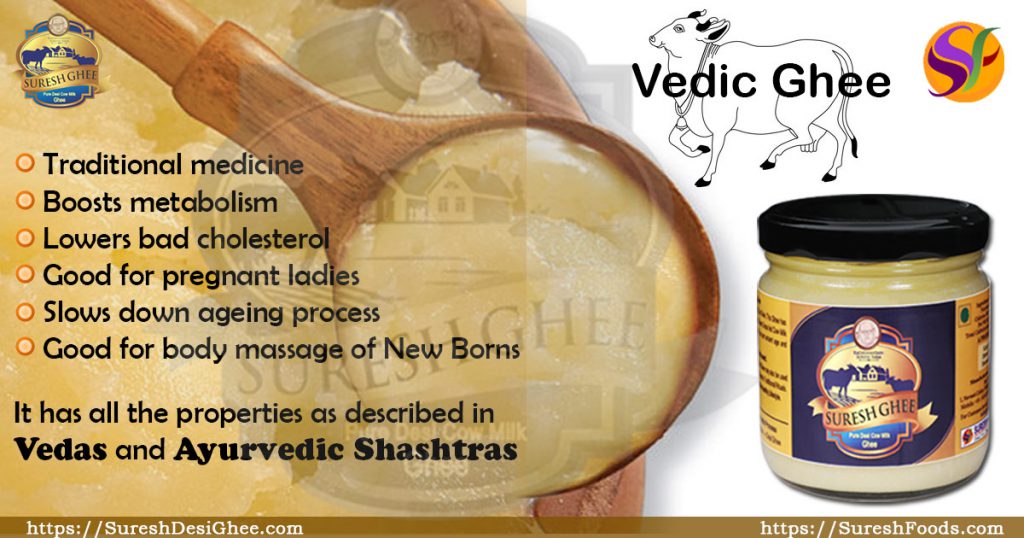
Vedic Ghee properties:
- A full spectrum of short (SCFA), medium (MCFA) and long-chain fatty acids (LCFA), both unsaturated and saturated
- Omega 3 or Omega 9 essential fatty acids
- Vitamins A, D, E and K2
- Ghee made from organic butter of pastured cows is one of the highest natural sources of CLA (Conjugated Linoleic Acid)
- 9 phenolic antioxidants
- Numerous other minerals
Why Pure Cow Ghee is Costly?
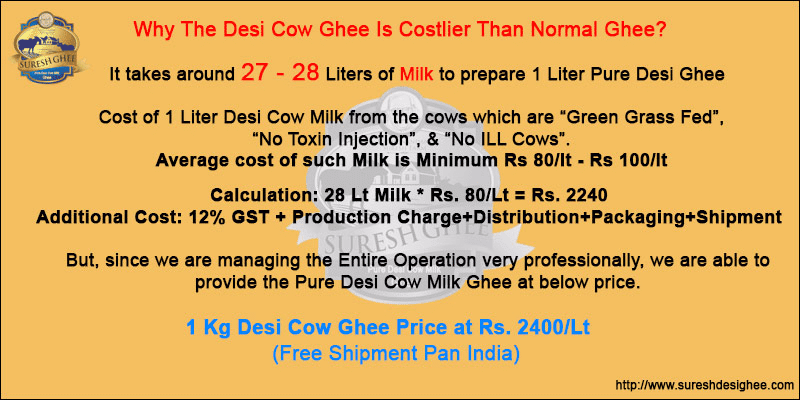
There are various factors on which the worth of Ghee differentiates.
Pure cow ghee must be slotted in certain parameters. Maintaining a single-breed cow farm is incredibly difficult. Also, the packaging is completed by glass jars in this case the transportation is challenging.
- Quantity of milk: With cows, the amount of milk quantity increases. So to make larger quantities of ghee that can be made here, milking cows is to be considered as a very important factor, and one more fact is considered by cost is their maintenance.
- Process of making ghee: If the Vedic method for making ghee uses 27 to 28 liters of milk to produce 1 litre of pure desi ghee hand-churned or bilona method.
- Process of constructing ghee: If the standard method of creating ghee uses 27 to 28 litres of milk to create 1 litre of pure ghee manually hand-churned billion.
- Maintenance of gaushala: The farmer can run the business if he can make enough money to run gaushala and his home, so finally it all depends on a notable exploit his sales income which affects the cost of ghee.
- Cost of transportation: If your location is with reference to the town, the land costs are increased, but the price of transportation is going to be less, such a big amount of gaushalas are within the village only in this case the transportation cost is going to be increased. So location is additionally a cost-decidable factor.
- Cows feed and care: All the revenue depends on cow milk. If cows stop giving milk, we’ve to worry for them within the sickness of lifelong expense. thanks to recent lifestyles, cows are considerably expensive now.
The consistency of ghee has a rich, caramelized nutty taste while sustaining all the health benefits for mind and body. Ghee tends to be solid at room temperature and possess a rich, grainy texture. If it is visibly too smooth, runny, or grainy in any unnatural way, it could be adulterated. Authentic ghee appears to be typically golden-yellow or pale yellow in color. If it is visibly too white or if it’s dyed to match the color of pure ghee, it could be fake. Try to heat a minimal quantity of ghee in a pan. The authentic ghee will leave no remains or impurities and will possess a pleasant aroma when heated. Fake ghee could regulate a residue, a bad odor, or excessive smoke.
In order to prepare ghee, About half the milk produced is obtained from buffalos. The consistency of buffalo milk has about double the butterfat content of cows, but according to the ayurvedic research, such milk does not contain the same purifying and healing qualities as cow’s milk.
Hence to figure out if the ghee is produced from buffalo milk, try to give a close look at the color. Ghee produced from Cow’s milk is golden yellow, and ghee produced from buffalo’s milk is dull yellow, or even whitish.
The ghee that has been produced from grass fed cow’s milk is simply superior to other butter as it consists of much higher levels of Vitamin K2 known as a nutrient that is extremely necessary to balance heart health. The presence of Omega-3 fatty acid, another pivotal component of a healthy heart, is there in good amounts.
A higher Levels of Conjugated Linoleic Acid (CLA) is a naturally occurring, healthy trans-fat which has been linked to positive health effects, that is superior heart health and tumor suppression which has illustrated that pasture feeding leads to dairy CLA levels 3-5 times that of grain-fed cattle.

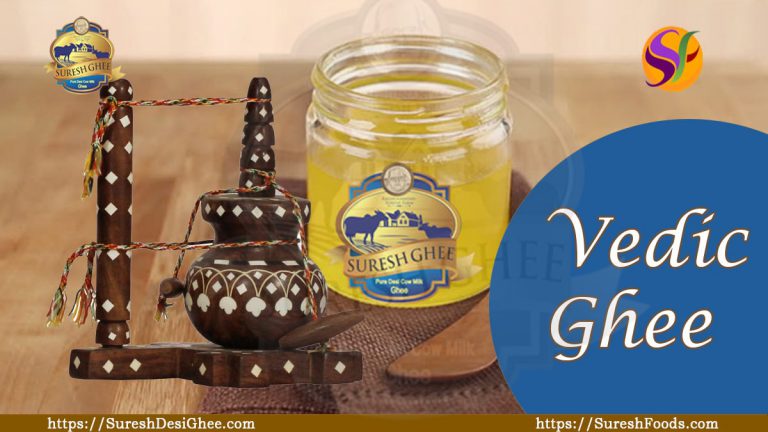

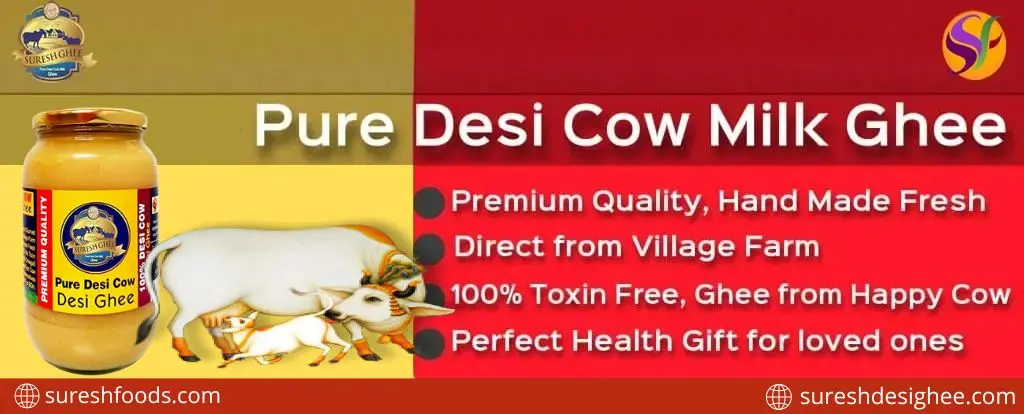

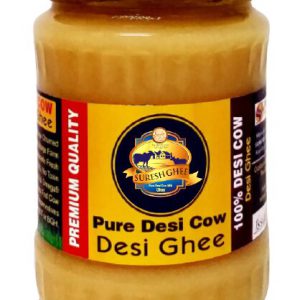
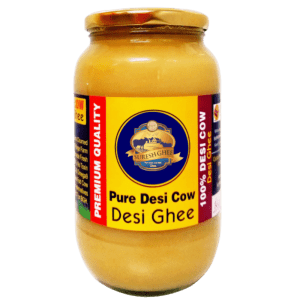
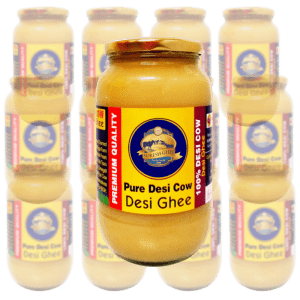
 WhatsApp us
WhatsApp us
Naveen m...